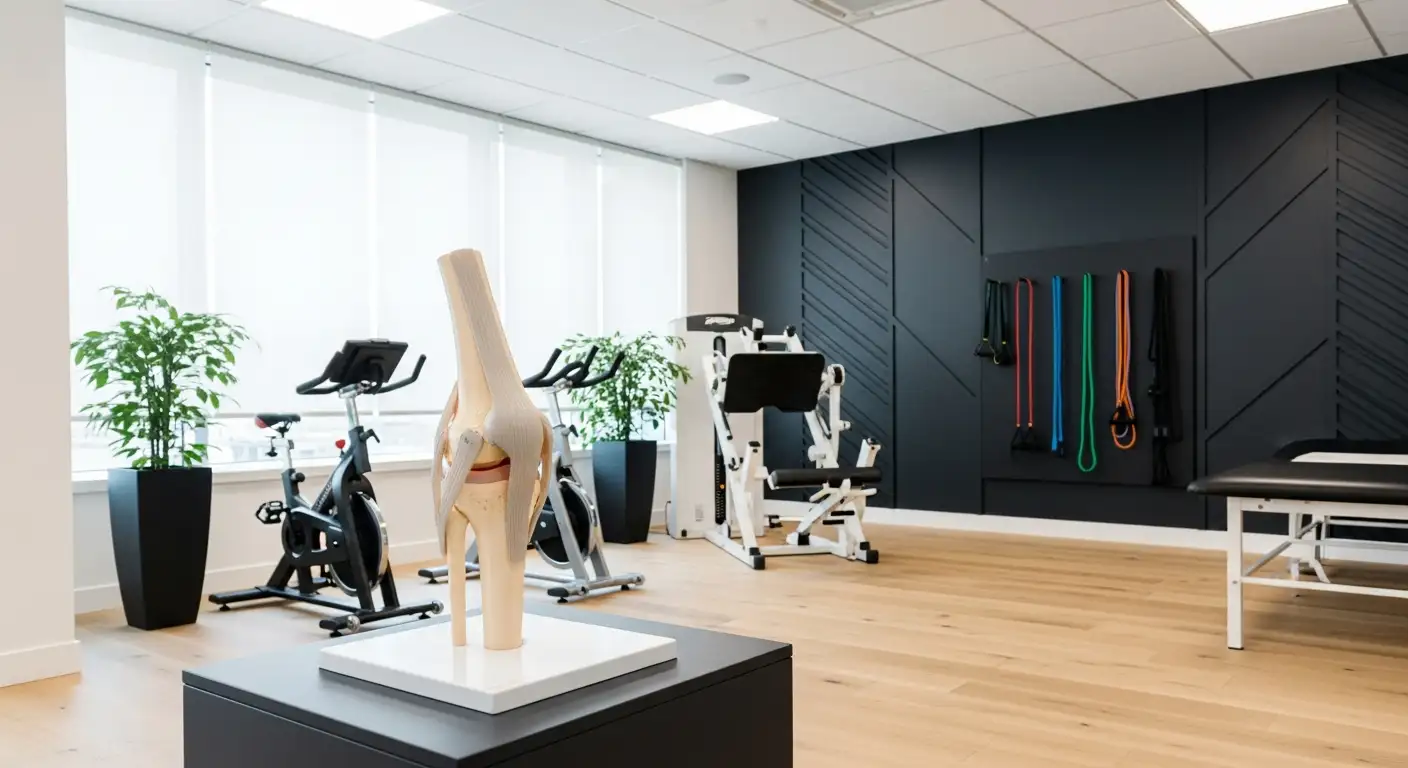Understanding Knee Pain
Knee pain, particularly a sharp knee pain when standing up, can significantly impact an individual's quality of life. Understanding the causes and prevalence of knee pain is the first step in effectively managing and treating this condition.
Prevalence and Impact of Knee Pain
Knee pain is a prevalent condition, especially among the elderly population. A study on the Korean elderly population demonstrated that the prevalence of knee pain is 46.2%, with 32.2% in men and 58.0% in women. The prevalence of knee pain in women increases with age, reaching a plateau after the age of 70.

The impact of knee pain on physical function and quality of life is significant. Individuals with knee pain have worse physical function and quality of life scores compared to those without knee pain, even when adjusted for the presence of knee osteoarthritis. Women with knee pain, in particular, have worse physical function and quality of life scores compared to men with the same condition.
In terms of lower extremity function, individuals with knee pain have more than a 5-fold increase in the risk of belonging to the worst lower extremity function category, compared to those without knee pain. This remains true even when accounting for knee osteoarthritis and other confounding factors.
Causes of Knee Pain
Knee pain when standing up can be caused by a variety of conditions and factors. These include, but are not limited to, injuries to the knee joint or surrounding tissues, degenerative conditions such as osteoarthritis, inflammatory conditions like rheumatoid arthritis, and overuse or strain from repetitive movements or certain physical activities.
In some cases, knee pain may also be referred pain, meaning it is caused by a problem in a different part of the body. For instance, issues with the hips or lower back can sometimes cause pain in the knee.
Understanding the underlying cause of knee pain is crucial in determining the most effective treatment strategy. If you experience persistent or severe knee pain, particularly when standing up, it is recommended to seek medical advice to accurately diagnose and treat the condition.
Identifying Specific Knee Conditions
Knee pain when standing up can be symptomatic of various underlying conditions. Here, we will discuss three common conditions associated with knee pain: osteoarthritis, meniscal tears, and patellofemoral pain syndrome.
Osteoarthritis and Knee Pain
Osteoarthritis is one of the prevalent causes of knee pain. It is characterized by stiffness, swelling, and pain in the knee joint, becoming more common as a person ages. This type of knee pain typically progresses slowly and is more persistent than acute pain caused by repetitive motions or activities [2].
Symptoms of osteoarthritis include:
- Pain that increases when you are active, but gets a little better with rest
- Stiffness in the knee, especially in the morning or when you have been sitting for a while
- Swelling or tenderness in the joint
Meniscal Tears and Knee Pain
Meniscal tears are another common cause of knee pain. These injuries often occur when the knee is forcefully twisted. The meniscus contributes to knee stability by using its wedge shape to prevent shifting and evenly disperse forces across the joint. When this stability is compromised by a tear, it can result in pain, particularly when standing up [2].
Common symptoms of meniscal tears include:
- Sudden or gradual pain in the inner or outer knee
- Swelling or stiffness
- Difficulty bending and straightening your leg
Patellofemoral Pain Syndrome
Patellofemoral pain syndrome is a common cause of knee pain. It is characterized by pain in the front of your knee, particularly when climbing stairs, kneeling, or standing up after sitting for a long time [3].
Symptoms of patellofemoral pain syndrome include:
- A dull, aching pain in the front of your knee
- Increased pain when walking up or down stairs
- A popping or crackling sensation in your knee when climbing stairs or after prolonged sitting
Understanding these conditions can help in recognizing the potential causes of knee pain when standing up. If you are experiencing persistent or severe knee pain, it is recommended to consult with a healthcare provider for a proper diagnosis and treatment options.
Knee Pain Symptoms and Diagnosis
Understanding the symptoms of knee pain and knowing when to seek medical advice are crucial steps in managing and treating knee pain, especially knee pain when standing up.
When to Seek Medical Advice
Knee pain when standing up can range from a minor annoyance to a debilitating condition. It's essential to monitor the symptoms and seek medical advice if the pain persists for more than a few days, interferes with daily activities, or disrupts sleep. It's especially important to consult a doctor if the pain is accompanied by swelling, redness, tenderness, or an inability to bend or fully extend the knee. Other signs that indicate the need for a medical consultation include a fever, a deformed appearance of the knee, or hearing a popping noise at the time of injury [4].
If knee pain when standing up is persistent or severe, it could indicate a more serious condition like a torn meniscus or fracture, requiring immediate medical attention. When home remedies and over-the-counter medications are ineffective or the pain worsens, it is advised to see a doctor. Persistent knee pain affecting function or exercise, acute injuries with swelling, buckling, or inability to bear weight require medical attention for further assessment and treatment options [2].
Diagnostic Tests for Knee Pain
Diagnostic tests for knee problems are designed to detect damage, disease, bone pain, and inflammation and to evaluate joint changes. These tests may include X-rays, MRI, CT scans, arthroscopy, and radionuclide bone scans. If initial treatment methods fail to provide relief and X-rays show joint destruction, an orthopedist may recommend total joint replacement for the knee, also known as knee replacement [5].
Accurate diagnosis of knee pain when standing up is crucial to developing an effective treatment plan. Treatment options can include physical therapy, lifestyle changes, weight loss, medications such as NSAIDs, corticosteroid injections, and in severe cases, knee replacement surgery.
In conclusion, it's important to listen to your body and seek professional medical help when experiencing persistent or severe knee pain when standing up. Early diagnosis and treatment can lead to better outcomes, including reduced pain and improved mobility.
Treatment Strategies for Knee Pain
Finding an effective solution for knee pain when standing up involves a multifaceted approach. Typically, treatment strategies may include exercise and physical therapy, medication, and lifestyle changes. Let's delve into each strategy in more detail.
Exercise and Physical Therapy
Exercise is a crucial component of knee pain management. Strengthening exercises focusing on the quadriceps and hamstrings, such as squats, lunges, leg lifts, and hamstring curls, can help alleviate knee pain when standing up Healthline. Low-impact exercises such as swimming, cycling, or using an elliptical machine can aid in reducing knee pain by improving joint flexibility and strength without exerting excessive pressure on the knees Healthline.
Physical therapy can also be beneficial in addressing knee pain when standing up. A physical therapist can design a customized exercise program, offer manual therapy, and provide guidance on proper form to help manage and reduce knee pain Healthline.
Some recommended exercises include:
- Knee Full Extension: Sit in a chair where the knee can bend to a ninety-degree angle, then slowly raise the leg until it's horizontal. Hold for five seconds before slowly returning it to the ground. Repeat with each leg for twenty repetitions Texas Health Care Bone & Joint Institute.
- Straight-Leg Lift: Lie on your back with one leg bent upward, keeping the other leg completely extended straight out. Slowly raise the straight leg to about a forty-five degree angle, hold for five seconds, then slowly lower it. Repeat this exercise twenty times for each leg Texas Health Care Bone & Joint Institute.
- Piriformis Stretch: Lie on your back, raise one leg, and bring it across the body to try to touch the ground by the opposite hand. Hold this stretch for twenty seconds, then return to the starting position. Repeat ten times with each leg Texas Health Care Bone & Joint Institute.
Medication and Medical Interventions
Medications such as NSAIDs and corticosteroid injections can be used to manage knee pain. In severe cases, knee replacement surgery may be considered Verywell Health.
Lifestyle Changes and Weight Management
Maintaining a healthy weight is essential to reducing knee pain when standing up, as excess weight increases strain on the knees. Losing weight through a balanced diet and regular exercise can significantly alleviate knee pain Healthline.
By combining a regular exercise regimen with physical therapy, medication, and lifestyle changes, individuals can effectively manage knee pain when standing up. It's always important to consult with a healthcare provider when beginning any new treatment strategy for knee pain.
Knee Pain Prevention and Management
Preventing and managing knee pain when standing up involves a balanced approach that includes targeted exercises, proper footwear, and maintaining a healthy weight through diet and exercise.
Exercises for Strengthening Knees
Exercises focusing on strengthening the quadriceps and hamstrings can help alleviate knee pain when standing up Healthline. Beneficial exercises include squats, lunges, leg lifts, and hamstring curls. Moreover, low-impact exercises such as swimming, cycling, or using an elliptical machine can improve joint flexibility and strength without exerting excessive pressure on the knees.
Here are two exercises recommended by Texas Health Care Bone & Joint Institute:
- Unweighted Flexion Exercise: Stand behind a chair for balance, flex one leg up to a ninety-degree angle, hold for ten seconds, and then return to the starting position. Repeat this exercise with each leg for ten repetitions.
- Knee Full Extension Exercise: Sit in a chair where the knee can bend to a ninety-degree angle, then slowly raise the leg until it's horizontal. Hold for five seconds before slowly returning it to the ground. Do this exercise with each leg for twenty repetitions.
Importance of Proper Footwear
Long-term use of high-heel shoes can increase the risk of knee pain and osteoarthritis WebMD. For the sake of knee health, opt for flat shoes or those with a low heel. Proper footwear can help maintain the right alignment and balance, reducing the strain on your knees.
Role of Diet and Weight Control
Maintaining a healthy weight is essential to reduce knee pain when standing up, as excess weight increases strain on the knees Healthline. Each pound of weight lost removes 4 pounds of pressure on knees, making weight loss a significant factor in alleviating knee pain WebMD.
Obese individuals have a higher risk of hip and knee osteoarthritis, making weight management crucial for knee health WebMD. Regular exercise and a balanced diet can significantly assist in weight loss and, consequently, knee pain management.
In conclusion, a multi-faceted approach is necessary for preventing and managing knee pain when standing up. A combination of targeted exercises, proper footwear, and weight control through diet and exercise can significantly improve knee health.
References
[1]: https://www.ncbi.nlm.nih.gov/pmc/articles/PMC3172649/
[2]: https://www.hss.edu/article_when-to-see-doctor-for-knee-pain.asp
[3]: https://www.mayoclinic.org/diseases-conditions/knee-pain/symptoms-causes/syc-20350849
[4]: https://www.mayoclinic.org/symptoms/knee-pain/basics/when-to-see-doctor/sym-20050688
[5]: https://www.hopkinsmedicine.org/health/conditions-and-diseases/knee-pain-and-problems
[6]: https://www.verywellhealth.com/knee-pain-when-standing-5094605




